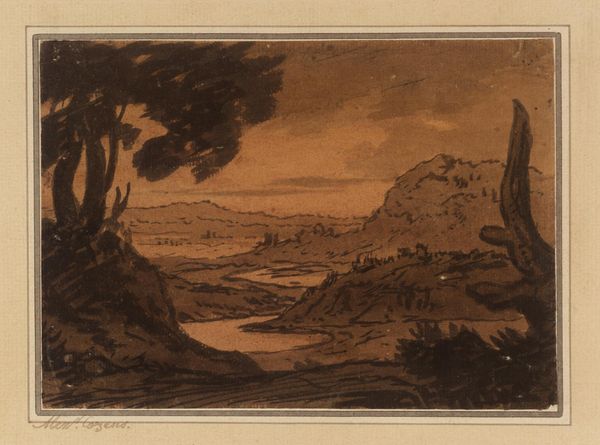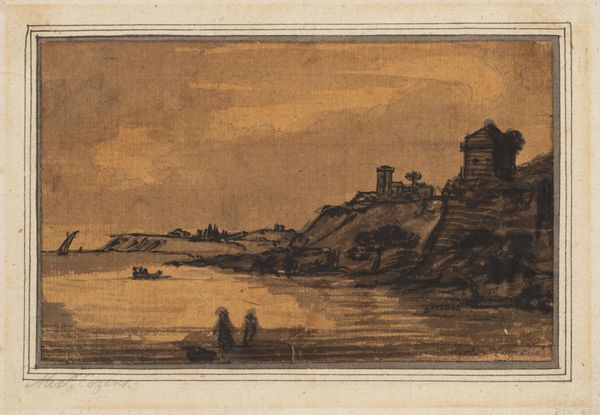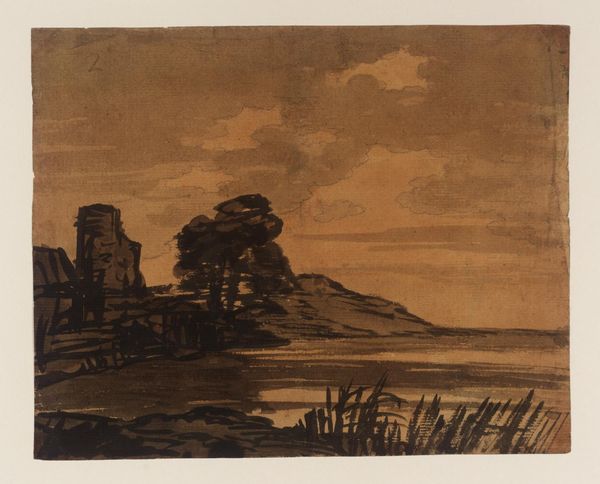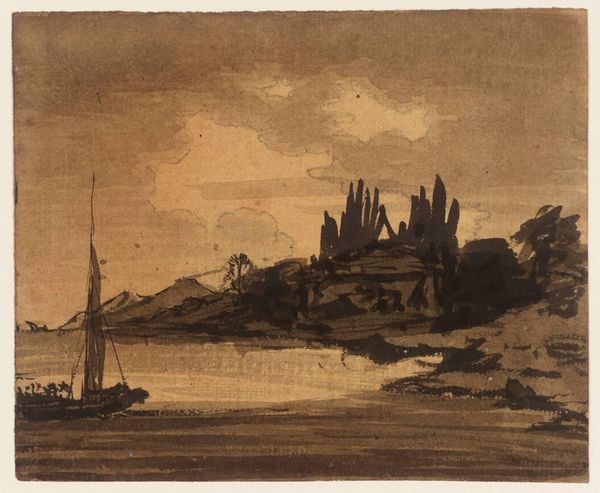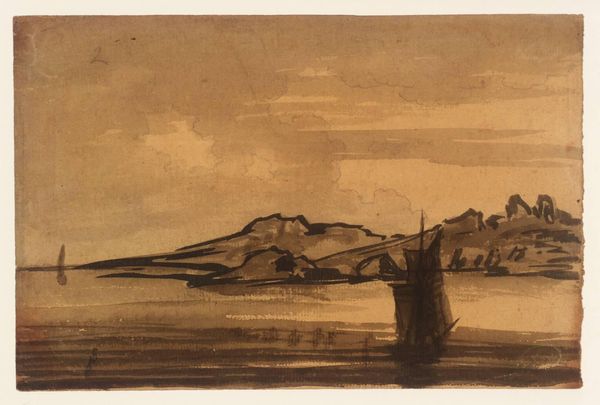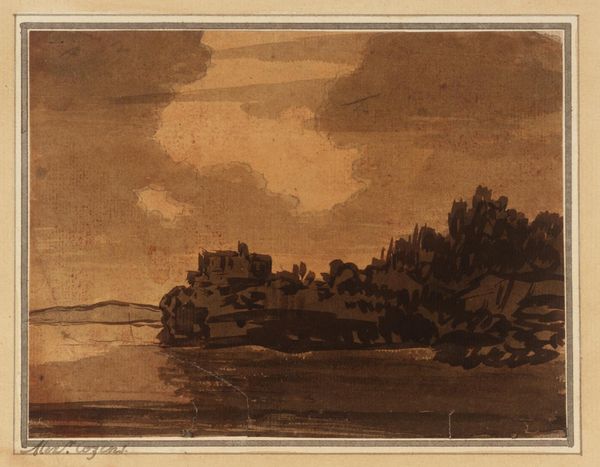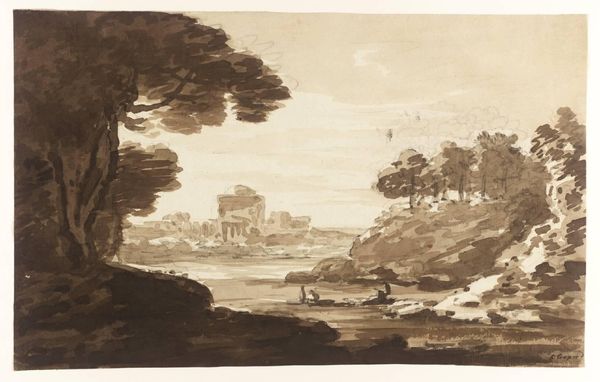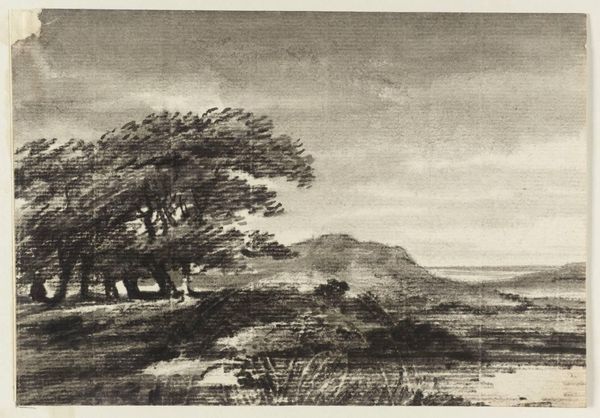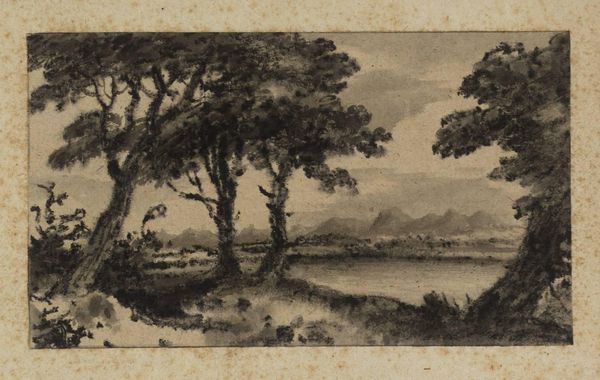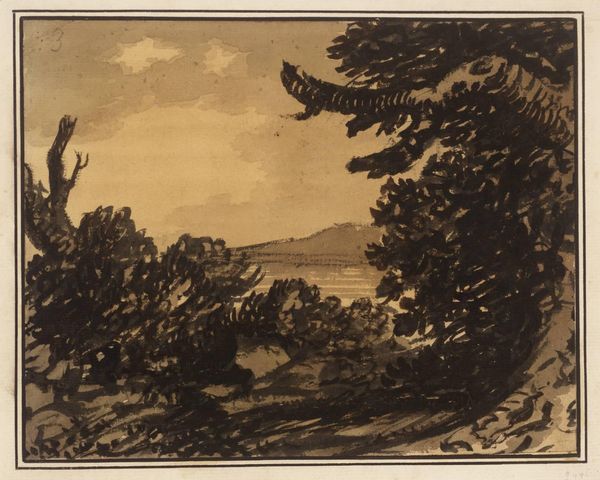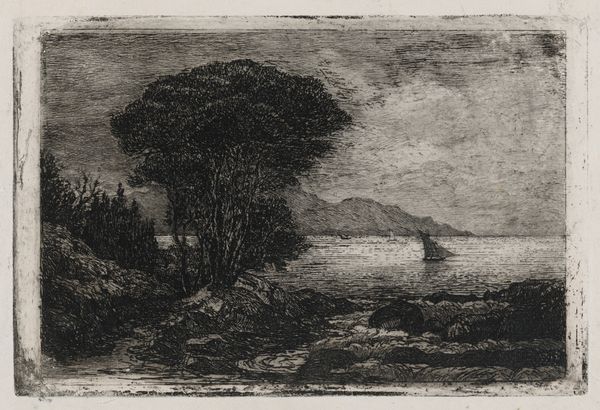
Dimensions: support: 99 x 159 mm
Copyright: CC-BY-NC-ND 4.0 DEED, Photo: Tate
Curator: Alexander Cozens' "Coast Line with Ruined Town, to Left" presents us with a somber scene rendered in monochrome wash. It's incredibly small, measuring only about 10 by 16 centimeters. Editor: There’s a haunting quality to this tiny vista, a sense of decline underscored by those ruins juxtaposed with the natural landscape. I’m immediately drawn to how class and power are implicated in the depiction of decay. Curator: Cozens was known for his "blot" technique—essentially controlled accidents using ink washes—which democratized landscape painting. It allowed for mass production of sublime images, and made them more accessible. Editor: Yes, and considering the period, this accessibility opens doors to discuss the evolving relationship between humans and their environment, class dynamics, and the picturesque movement’s impact on social perceptions. Curator: Seeing the handmade nature, how the ink interacts with the paper, really emphasizes that craft element. It shifts the focus from solely aesthetic appreciation to labor. Editor: Precisely. By examining how ruins symbolize societal shifts, we expose the politics embedded in landscape art. The ruin suggests a lost community, perhaps dispossessed from land. Curator: It's fascinating how Cozens used simple materials to evoke such complex emotions. Editor: Absolutely. It makes you consider the stories of communities displaced or erased over time.
